Caring for seedlings after they sprout is not easy, but it can be rewarding. You can ensure your seedlings grow into healthy plants with the right soil, watering schedule, and transplanting techniques. Remember always to monitor your seedlings’ growth and adjust your care accordingly.
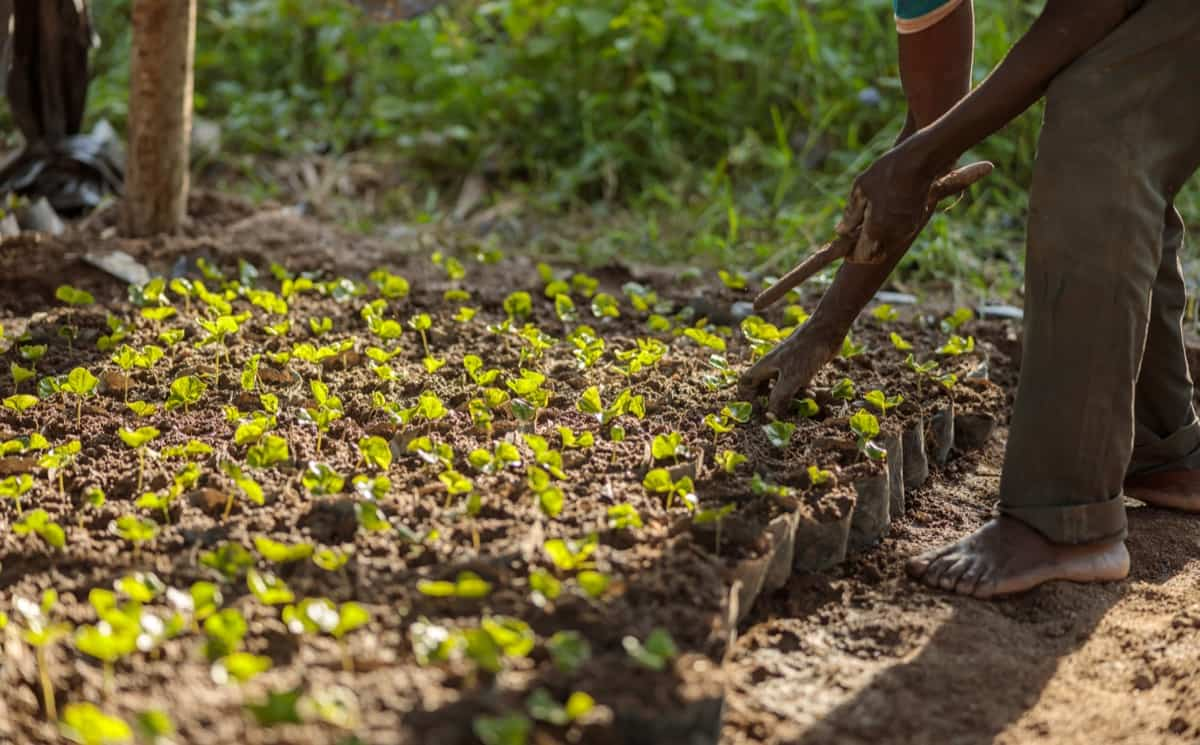
They will require different moisture levels and nutrients as they continue to develop. A gardener must provide the proper nutrients, lighting, and temperature for your seedlings. Remember that each type of plant may have specific needs, so always research before planting. Continue providing the proper care even after transplanting to help them adjust well to their new environment. Let’s check out how to take care of seedlings after they sprout below.
Growing Seedlings Indoors
Growing seedlings indoors can be a great way to start your garden early, even in a region with a shorter growing season. It’s also an excellent option for those who want greater control over their plants’ environment and health. To begin, choose the suitable container for your seeds. You’ll need one that allows for proper drainage and enough room for the plant to grow. Peat pots or trays are ideal as they decompose quickly in the soil after planting. Fill your containers with high-quality potting soil mixed with compost.
Make sure it’s damp but not too wet before adding the seeds. When sowing seeds, remember that each variety will have different requirements regarding depth and spacing. Once planted, cover containers with plastic wrap or a clear lid until germination occurs. Then remove this covering and move them into bright light conditions such as near windowsills or under grow lights, depending on availability. Remember to keep the soil moist and monitor temperature fluctuations carefully during this time.
How to Take Care of Seedlings After They Sprout
Light for Seedlings
Light is the most important factor when it comes to growing seedlings indoors. Seedlings require much light to grow strong and healthy, as they do not get direct sunlight outdoors. When providing light for your seedlings, it’s crucial to keep them close enough to the source without burning them.
Indications That Show Your Soil is Bad and How to Fix It
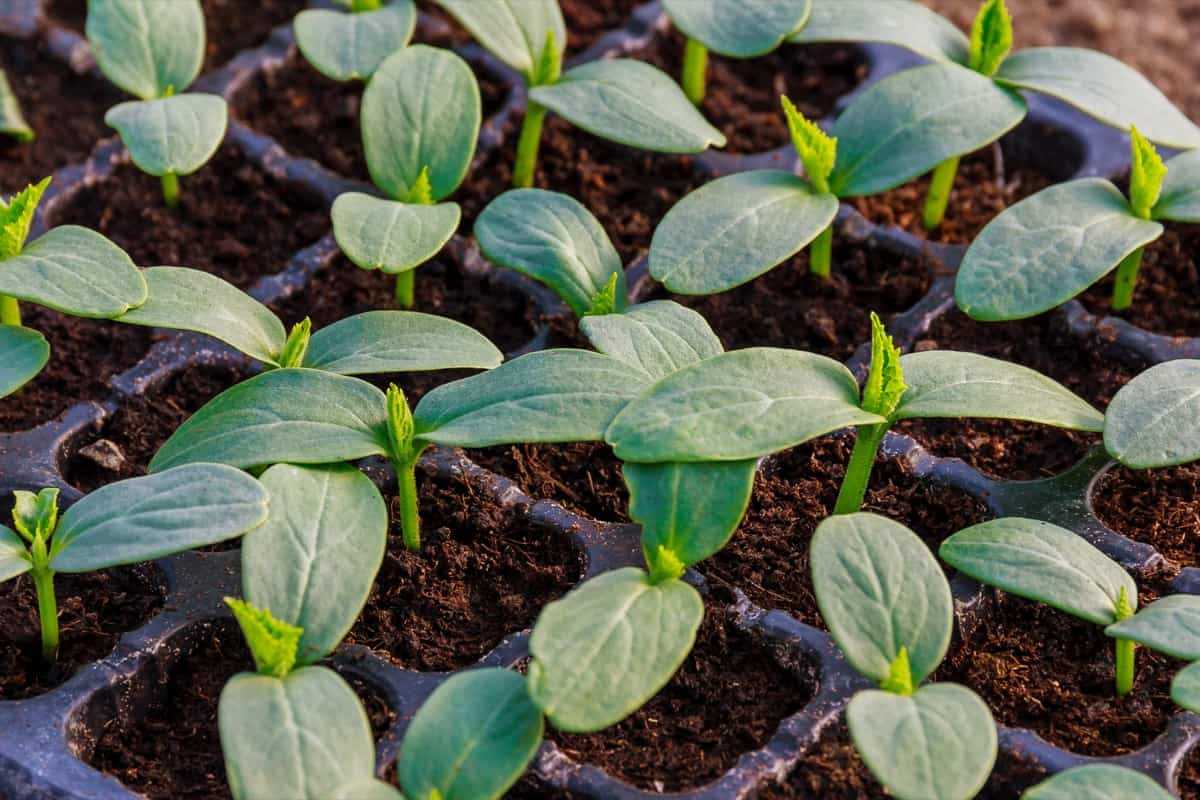
Another important aspect is how long you should leave your lights on. Generally, seedlings need between 12-16 hours of light daily, mimicking natural daylight patterns. You can set up timers or manually turn the lights off and on according to their schedule. Remember that your seedlings still need adequate water and ventilation to thrive, even with proper lighting.
Proper Seedling Watering
Water is essential for growing seedlings, but it’s crucial not to overwater them. Overwatering can cause root rot and kill your seedlings. To avoid this, make sure the soil is moist but not soggy. One way to check if your seedlings need watering is by sticking a finger into the soil up to the first knuckle. If it feels dry, then it’s time to water them. You can also lift the container or tray they are in; if it feels light and dry, they need water. When watering your seedlings, use room-temperature water and pour gently around the base of each plant until you see a bit of runoff at the bottom of their container.
Don’t spray them from above; this can dislodge seeds or damage young plants. You should water early in the day so that any excess moisture evaporates before nightfall when cooler temperatures can encourage fungal growth on leaves. Remember that different types of plants have varying preferences for how much moisture they require. Depending on their size and species, some may need daily watering while others only once every few days.
Seedling Ventilation & Airflow
Proper air circulation is crucial to the health and growth of your seedlings. Excess moisture can build up around the plants without adequate ventilation, leading to fungal diseases or mold growth. To provide sufficient airflow for your seedlings, place a small fan near them at low speed. The gentle breeze from the fan will help strengthen plant stems and prevent damping-off disease caused by stagnant air.
It’s also important to avoid overcrowding your seedlings, leading to poor ventilation. Be sure to space out each seedling so that they have enough room to grow properly. You can also use a dome or cover with vents that allow proper airflow while keeping in humidity. Another way to ensure healthy airflow is by opening windows or using an exhaust fan if growing indoors.
In case you missed it: How to Prevent Bitter Cucumbers and Grow Sweet and Juicy Fruits

Thinning Overcrowded Seedlings
Thinning overcrowded seedlings is an important step in caring for your plants. When too many seedlings grow in a small space, they can become weak and compete for nutrients and water. One way to thin overcrowded seedlings is by gently pulling out the smaller or weaker ones. This allows more room for the remaining plants to grow and thrive. Be sure to do this carefully so as not to disturb the roots of the healthy plants.
Another method is pruning shears to snip off the excess seedlings at the soil level. This helps prevent damage to nearby roots while allowing enough space for proper growth. It’s important not to wait too long before thinning overcrowded seedlings, as leaving them clustered together for too long can lead to stunted growth and lower yields later. Remember that transplanting may also be necessary if you have multiple healthy seedlings that need more space than their container provides.
Fertilizing Your Seedlings
Fertilizing your seedlings is a crucial step in their growth and development. During the early stages of growth, seedlings rely heavily on the nutrients found in soil for nourishment. Fertilizer provides essential macronutrients like nitrogen, phosphorus, and potassium to promote healthy plant growth.
When selecting fertilizer for your seedlings, choosing one specifically designed for young plants is important. Look for fertilizers with lower concentrations of nutrients, as high levels can damage or even kill sensitive plants. Organic fertilizers come from natural sources, like composted plant material or animal manure, while synthetic fertilizers are chemically produced.
To apply fertilizer to your seedlings, first, water them thoroughly, then carefully pour or sprinkle the recommended amount onto the soil around each plant, taking care not to get any on leaves or stems, which may cause burns. Proper fertilization is essential for successful indoor gardening with seedlings. Choose an appropriate low-concentration organic or synthetic fertilizer designed specifically for young plants and follow application instructions carefully without overdoing it.
Tips for Plant Seedlings Outside
When to Plant Seedlings into Your Garden
When it comes to planting seedlings in your garden, timing is crucial. You want to ensure the soil is warm enough for your plants to thrive and avoid potential frost damage. The ideal time for planting seedlings varies depending on where you live and what plant you’re growing. Generally, wait until your area’s last expected frost date before transplanting seedlings outside.
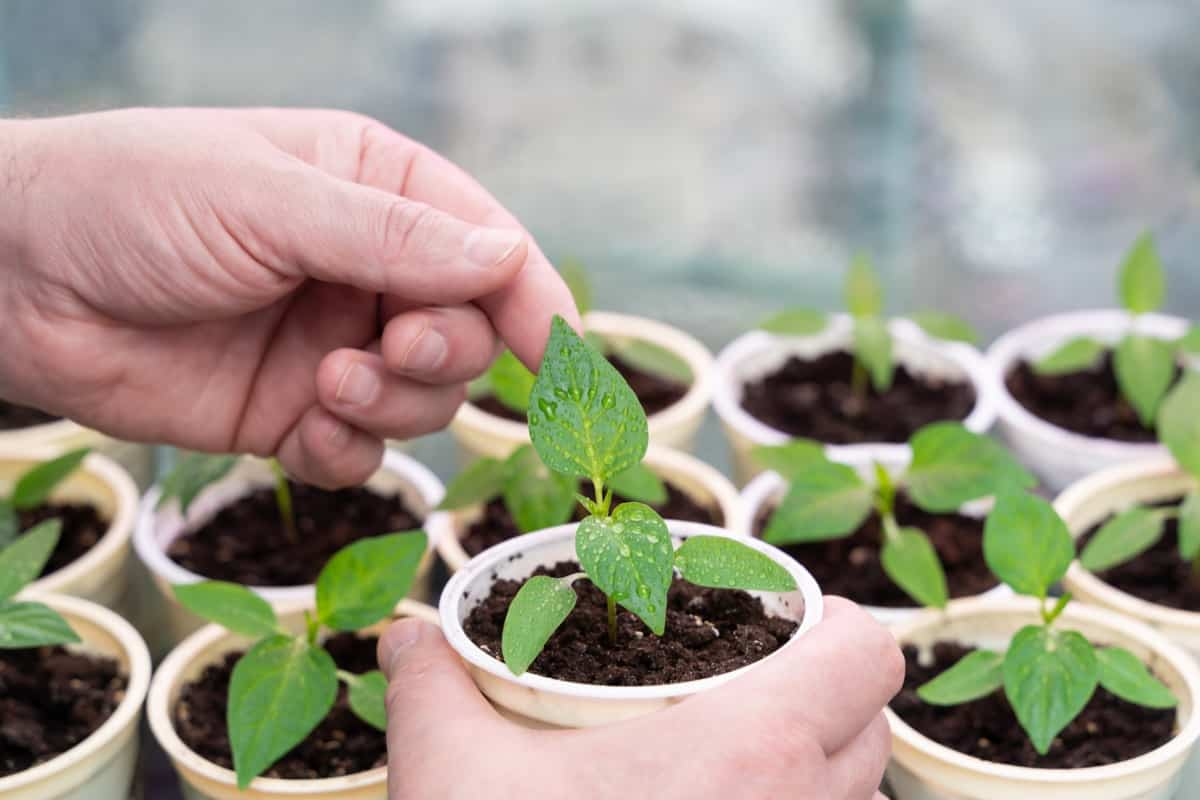
Some plants prefer cooler temperatures, while others thrive in warmer weather. Moving seedlings to pots is an important step in the growth process. When transplanting, choose a pot at least two inches larger than the previous one with proper drainage holes. Fill it with fresh soil and create a small hole for your seedling.
Preparing Seedlings for Planting Outside
Once your seedlings have grown strong and healthy, it’s time to start preparing them for life in the great outdoors. The first step is exposing your seedlings to just an hour or two of sunlight daily. Slowly increase this time until they spend most of their day in direct sunshine. You can also begin leaving them outside overnight if temperatures are above freezing. Protecting your seedlings from strong winds during this period is also essential. A gentle breeze can help strengthen their stems, but harsh gusts could damage or break them.
Another crucial factor when preparing seedlings for planting outside is slowly acclimating them to outdoor temperatures. If you’ve been keeping your plants indoors or in a greenhouse with controlled temperatures, they may not be ready for sudden shifts in weather conditions. Gradually expose them to cooler nighttime temperatures over several weeks before transplanting them into the garden.
Troubleshooting Common Seedling Care Problems
Leggy Seedlings
Leggy seedlings are a common issue faced by many gardeners. This occurs when the seedlings grow tall and skinny, with weak stems and few leaves. It is caused by insufficient light reaching the plants. Ensuring they receive enough sunlight or artificial light if growing indoors is important to prevent leggy seedlings. A lack of light can lead to stretching as the plant tries to find lighter.
In case you missed it: Growing Persimmons in Containers from Seed, Seedlings
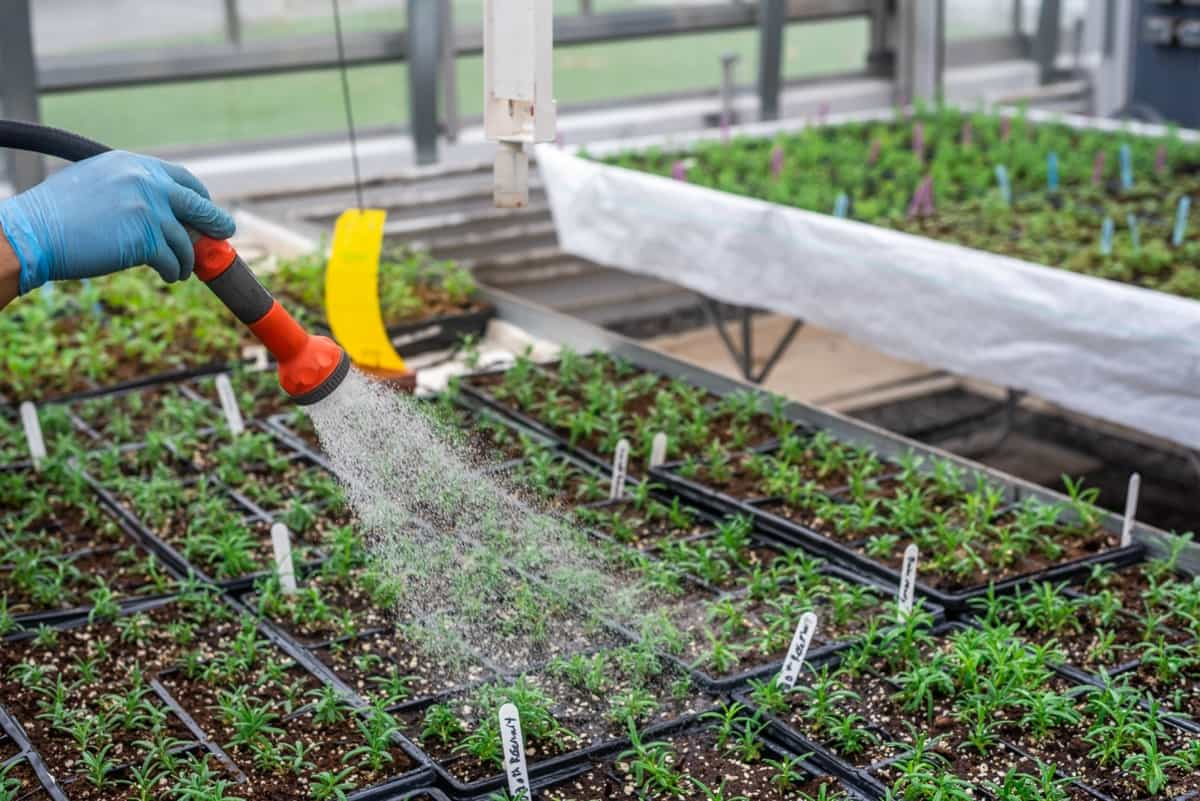
Another way to prevent this problem is by planting seeds at an appropriate depth. If planted too deep, the seedling will struggle to reach the surface and may become spindly in its journey upwards. If you notice leggy seedlings in your garden, you can try transplanting them into deeper soil or burying them deeper than their current placement. It’s essential not to damage any roots during this process, so be gentle. Leggy seedlings occur due to insufficient lighting and incorrect planting depths. Preventative measures such as providing adequate lighting and setting proper planting depths can help avoid this problem.
Seedlings Leaning Over, Stretching, Or Growing Sideways
One of the most common problems gardeners encounter when caring for seedlings is when they lean over, stretch out, or grow sideways. This can happen for various reasons, leading to weakened plants being more susceptible to disease and pests. One reason for this problem is insufficient light. When seedlings do not receive adequate light, they will reach the nearest source to get enough energy for growth. This often leads them to lean over or stretch out unnaturally.
Another possible cause may be overcrowding. If your seedlings are planted too close together, they will have no choice but to compete with each other for resources such as nutrients and water, which can result in distorted growth patterns. In addition, improper watering techniques can contribute to the problem since they could result in uneven soil moisture levels, leading the plant roots to look elsewhere for water, tilting sideways, or leaning over unnaturally.
To prevent this issue from occurring, make sure that you provide enough light by placing your pots near a window receiving at least eight hours of sunlight daily while ensuring proper spacing between plants while providing consistent watering practices using a drip irrigation system or spray bottle without flooding your soil surface with excess water.
Seedlings Dying After Sprouting
The most frustrating thing for gardeners is when their seedlings die after sprouting. Putting so much effort into planting and nurturing your seeds can be disheartening to have them wither away before they mature. The watering schedule is the first thing you should check if your seedlings die after sprouting. Overwatering or underwatering can cause young plants problems, leading to stunted growth or death. Make sure that you’re giving your seedlings enough water without drowning them. Another common culprit behind dying seedlings is pests or diseases.
Certain fungi, bacteria, and insects can wreak havoc on delicate young plants, causing leaves to yellow and wilt or roots to rot away entirely. Look for signs of infestation, like holes in leaves, sticky residue on stems, or discoloration. Consider environmental factors like temperature and lighting conditions. Seedlings need warmth and bright light to thrive; too little of either can cause them stress, which leads to death. If you’re growing indoors, ensure your lights are positioned correctly so that all parts of each plant get adequate illumination.
In case you missed it: How and When to Transplant Seedlings
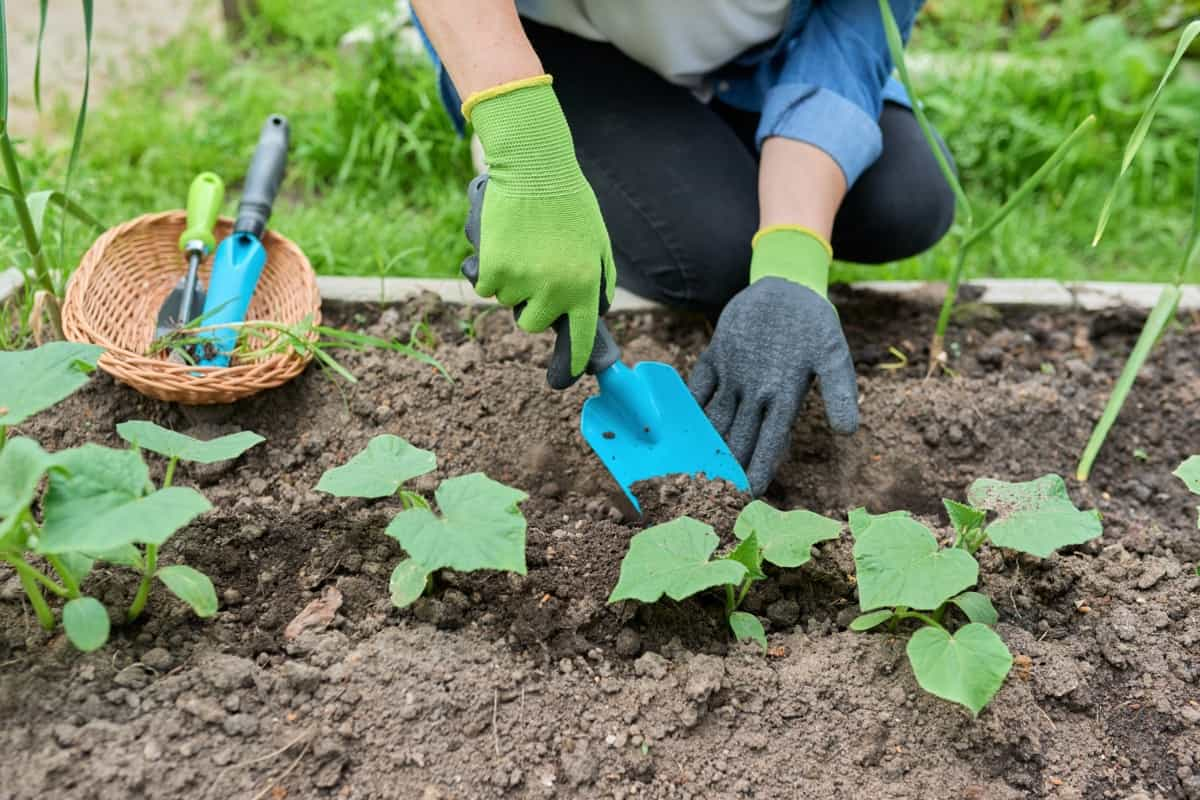
Yellow Seedlings
If you notice that your seedlings are turning yellow, it is a sign of trouble. Yellowing can indicate several issues, such as nutrient deficiencies, over or under-watering, and pests. One possible cause of yellow seedlings is nitrogen deficiency. When plants lack nitrogen, their leaves turn pale green to yellow. This problem can be solved by fertilizing the soil with a balanced blend of nutrients. Another potential problem leading to yellowing could be overwatering or underwatering.
If the soil doesn’t drain well enough and remains too wet for too long, this can lead to root rot, resulting in the plant being unable to absorb water effectively, wilting, and discoloration. Pests like spider mites also make seedling leaves turn yellow by sucking sap, causing cellular damage. Using safe insecticidal spray should keep these pests at bay. When growing seeds indoors, you must understand what is happening during each stage of growth so any issues arising may be remedied quickly before they harm your plants further.
Conclusion
Taking care of seedlings can seem daunting, but with the right knowledge and preparation, it can be an enjoyable experience. Remember to give your seedlings plenty of light, water them regularly, and ensure they have the necessary nutrients to grow strong. When it comes time to transplant your seedlings into pots or outside in your garden, don’t shock them by exposing them too quickly to their new environment.
Gradually introduce them over days or weeks until they are ready for planting. With these tips in mind, you’ll be well on your way to growing healthy and vibrant plants from seed. Watching your hard work pay off as you harvest fresh vegetables or enjoy beautiful flowers is a satisfying reward for any gardener.
- Gardening Techniques in Planting Vegetables
- Where to Place Indoor Plants in Your Home
- How to Grow Tomatoes Organically at Home: A Comprehensive Guide
- Organic Gardening on a Budget: Low-Cost Methods and Materials
- Gongura Seed Germination and Planting Methods
- Cabbage Seed Germination and Selection
- Broccoli Seed Germination and Selection
- Asparagus Seed Germination and Variety Selection
- Seasonal Flower Gardening: Best Practices for Spring, Summer, Fall, and Winter
- How to Grow Hibiscus from Flower
- Plantation Ideas for Home Decoration: A Beginners Guide
- Flower Garden Designs and Layouts for Beginners
- Planting and Spacing Techniques in Papaya: A Beginner’s Guide
- Growing Gold: Essential Techniques for Planting Pineapples
- How to Make Kalanchoe Plant Bushy: Home Remedies and Solutions
- 11 Reasons Why Your Gardenia is Not Blooming: Home Remedies and Solutions
- Eco Elegance: The Guide to Designing a Drought-Tolerant Landscape
- Gardening on a Slope: Strategies for Hillside Landscaping
- Nourish and Flourish: Top Organic Mulches for Thriving House Plants
- Everything You Want to Know about Indian Mogra Flower: Discover Uses and Growing
- Green Thumb Success: Expert Tips for Cultivating Greenhouse Pumpkins All Year Round
- Maximize Growth & Flavor: The Ultimate Guide to Companion Planting in Herb Gardens
- How to Control Rhododendron Problems Naturally: Home Remedies and Organic Ways to Fix Them
- Natural Magic: The Remarkable Benefits of Cinnamon for Plants
- Best Steps to Revive Dying Tulip with Natural and Organic Treatment
- 10 Reasons Why Your Angel Trumpet is Not Blooming: Remedies and Treatment
- How to Fix Periwinkle Leaf and Flower-Related Problems: Natural Remedies and Solutions
- How to Fix Zinnias Leaf and Flower Problems: Discover Natural and Home Remedies
- Organic Steps to Induce Lemon Tree Flowers: A Comprehensive Guide
- Bloom Booster: Crafting the Perfect Homemade Bougainvillea Fertilizer
- Optimizing Growth: A Guide to Applying NPK Fertilizer for Potted Plants
- 10 Best Homemade Fertilizers for Rubber Plant: DIY Recipes and Application Method
- How to Boost Female Pumpkin Flowers: Effective Steps for More Flowers and High Yields
- Transform Your Indoor Garden: Top Benefits of Pink Salt for Houseplants
- 10 Best Homemade Fertilizers for Peacock Plants (Calathea): Easy DIY Guide
- Unlock Blooms: 9 Reasons Why Your Potted Chrysanthemum is Not Blooming